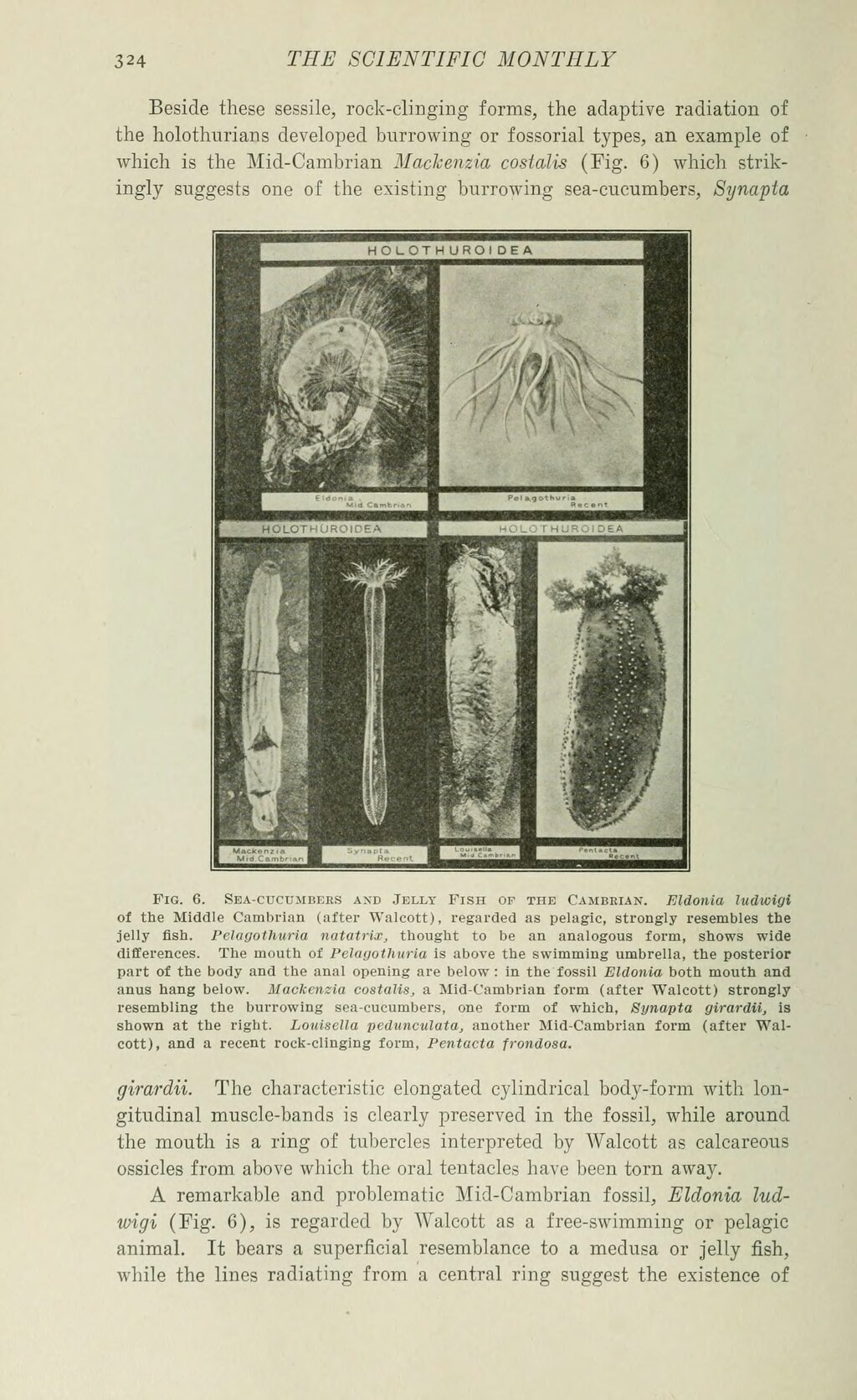324 THE SCIENTIFIC MONTHLY
Beside these sessile, rock-clinging forme, the adaptive radiation of the holothurians developed burrowing or fossorial types, an example of which is the Mid-Cambrian Mackemia costaiis {Fig. 6) which strik- ingly suggests one of the existing burrowing sea-cucumbers, Synapta
��Fia. 6. SEA-CtlCUMBEKB ISD JSLLT FiBH OP THE CaMBBUN. KldOBia tlldlBW
Of the Middle Cambrlna (atler Walcott), regarded at pelagic, itroDgl; reaembla Ua Jell; Bib. Pclagolliuria nalatrix, thougbt to be an analogoua form, Bbowi widt dtllerencee. The mouth ol Ptlagolhuria 1b abo>e the awlmmlDg ambrella. the poaterloc part of the bodr and the aoal op«alng are below: In the foaall Eldonia botb mouth ud BDUi hang below. Uackenila coitalU, a Mld-Cambrlao form {ittei Walcott) Btiiiu|lr resembling the burrowing sf a -cucumbers, one form of wblch, Bvnapta utmrHt. Ii sbown at the right. Lovisella pedunculata, another Mid-Cambrian form <after Wil- cott), and a recent rock-clloglng (orm, Prntacia frondaia.
girardii. The characteristic elongated cylindrical body-form with lon- gitudinal muscle-bands is clearly preserved in the fossil, while around the mouth is a ring of tubercles interpreted by Walcott as calcareous ossicles from al>ove which the oral tentacles have been torn away.
A remarkable and problematic Mid-Cambrian fossil, Eldonia M mgi (Fig. 6), is regarded by Walcott as a free-swimming or pelagic animal. It bears a superficial resemblance to a medusa or jelly fish, while the lines radiating from a central ring suggest the existence of
�� �
